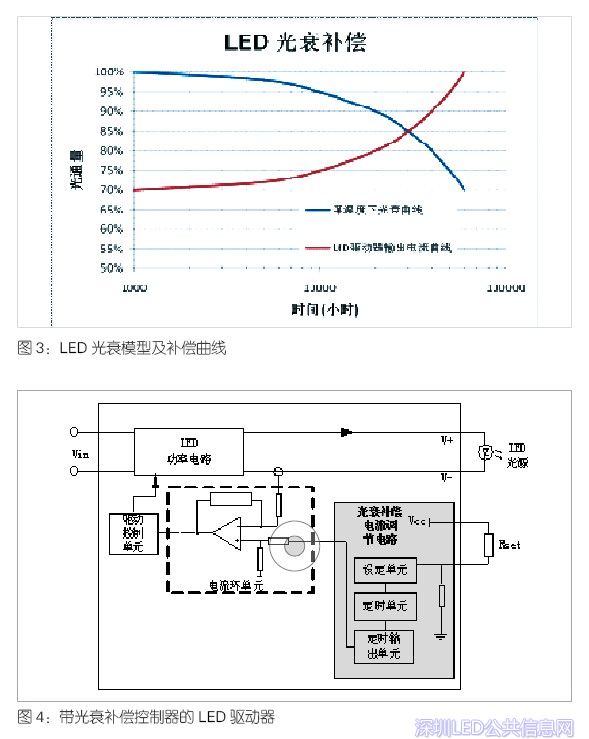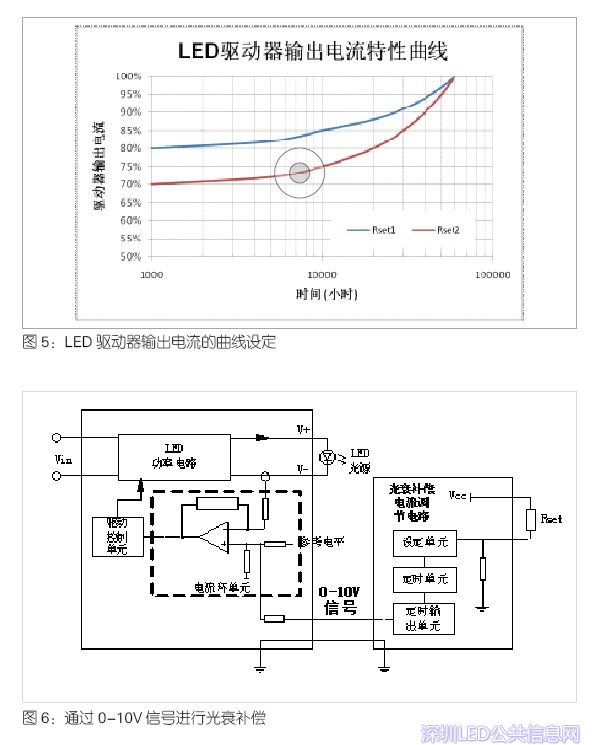


High-power LED lighting performance has been recognized with time and temperature decline, which is an important issue facing high-power LED lighting. Since the price of high-power LEDs is still relatively high, in order to obtain a better return on investment with other light sources through LEDs, it is necessary to make up for the high price of lamps by long life and at the same time saving electricity. At present, domestic high-power LED lighting solves the problem of light decay. The usual practice is to provide more than the required luminous flux before the luminaire reaches the expected life. The luminous flux is gradually reduced during the use of the luminaire. When the luminaire reaches the expected life, the luminous flux of the luminaire is close. Actually needed value. Although this method is simple, it is undoubtedly a waste of electrical energy. Excessive lighting also affects the life of the luminaire, so it is meaningful to find a better solution to the light decay.
From the normal use of LEDs, the most important factor affecting the life of LEDs is heat. The source of heat is mainly the heat generated by LED. High-power LED converts 20-30% of the energy into light, and about 70% converts it into heat. In addition, if the drive adopts the built-in method, the loss of the driver will also increase the LED. Heat. The accumulation of heat causes the temperature to rise, and the temperature rise causes the performance of the chip to decline, the material to age, and the denaturation. At present, the light decay of high-power LEDs is mainly determined by the chip itself. In addition, improper application (improper power supply, poor heat dissipation, etc.) is also the cause of light decay, as shown in Figure 1.
The light decay of an LED is related to its junction temperature. The so-called junction temperature is the temperature of the semiconductor PN junction. The higher the junction temperature, the earlier the light decay occurs, that is, the shorter the lifetime. As can be seen from Figure 1, if the junction temperature is 105 degrees, the lifetime of brightness reduction to 70% is only 10,000 hours, there are 20,000 hours at 95 degrees, and the junction temperature is reduced to 75 degrees, and the lifetime is 40,000 hours. It can be extended to 90,000 hours at 65 degrees. So the key to extending life is to lower the junction temperature. But in fact, due to the individual size of the lamp itself and the cost control factor, the junction temperature of the LED is generally difficult to control at a relatively low value. The situation of light decay is always a lingering shadow in the design of LED lamps. For a particular LED chip, the traditional approach is to set the output current to a value that corresponds to the lumen requirements of the LED source's rated life. This will cause the lumen output of the LED light to be rated above 130% or even higher when it is first used, as shown in Figure 2.
Therefore, the traditional LED lighting design, the lamp is always in the state of excessive illumination before the life of the lamp, for the new lamp, the lighting may even reach more than 30%, and the intelligent light decay compensation method can make the lamp work constantly in the life cycle. The luminous flux state that the user needs saves the energy that is wasted by excessive lighting, while also extending the life of the light source and the driver.
Infineon Electronics proposes a new solution to solve the light attenuation compensation through intelligent control.
Firstly, according to the temperature of the LED chip, the light decay characteristic curve of the LED is obtained from the data sheet of the LED chip, and a mathematical model is established. Then, through the internal calculation of the control chip, a curve in which the output current is slowly increased as shown in the following figure is obtained. The LED driver can control the current output of the LED to increase as the cumulative illumination time of the LED light source increases, thereby increasing the luminous flux output by the LED light source as the cumulative illumination time increases, thereby realizing the light attenuation compensation, thereby ensuring that the luminous flux output by the LED light source can follow The increase in cumulative illumination time is always constant for the amount required in the illuminated area, as shown in Figure 3. The basic block diagram of the control is shown in Figure 4.
The light decay compensation controller includes a compensation design unit, a timing control unit and an output unit. The output controls the drive's output current to vary with the controller's design by controlling the reference level in the driver's current feedback control. The external Rset can be used to set different compensation curves, as shown in Figure 5.
In addition, for the existing LED driver without built-in optical attenuation compensation, as long as the driver can be dimmed by 0-10V, the optical attenuation compensation can be realized by an external light decay compensation controller, as shown in FIG. 6.
This kind of light attenuation compensation technology proposed by Infineon Electronics does not need to reserve current when driving LED light source, which saves energy and prolongs the life of the lamp. The cost of reducing the light source of the luminaire can be achieved. By changing the resistance on the light attenuation adjustment line, the same LED driving device can realize different light attenuation compensation characteristics when driving LED light sources with different light decay rates, thereby improving the versatility of the device. In addition, if you want to achieve more accurate light attenuation compensation, Infineon can write custom programs in the controller in advance for the customer before leaving the factory. In the near future, this light-loss compensation controller will be integrated with controllers of other functions to achieve more functional LED control.
SHENZHEN YINZHIGUAN DIGITAL TECHNOLOGY CO.,LTD , http://www.yzgmusiccrown.com
